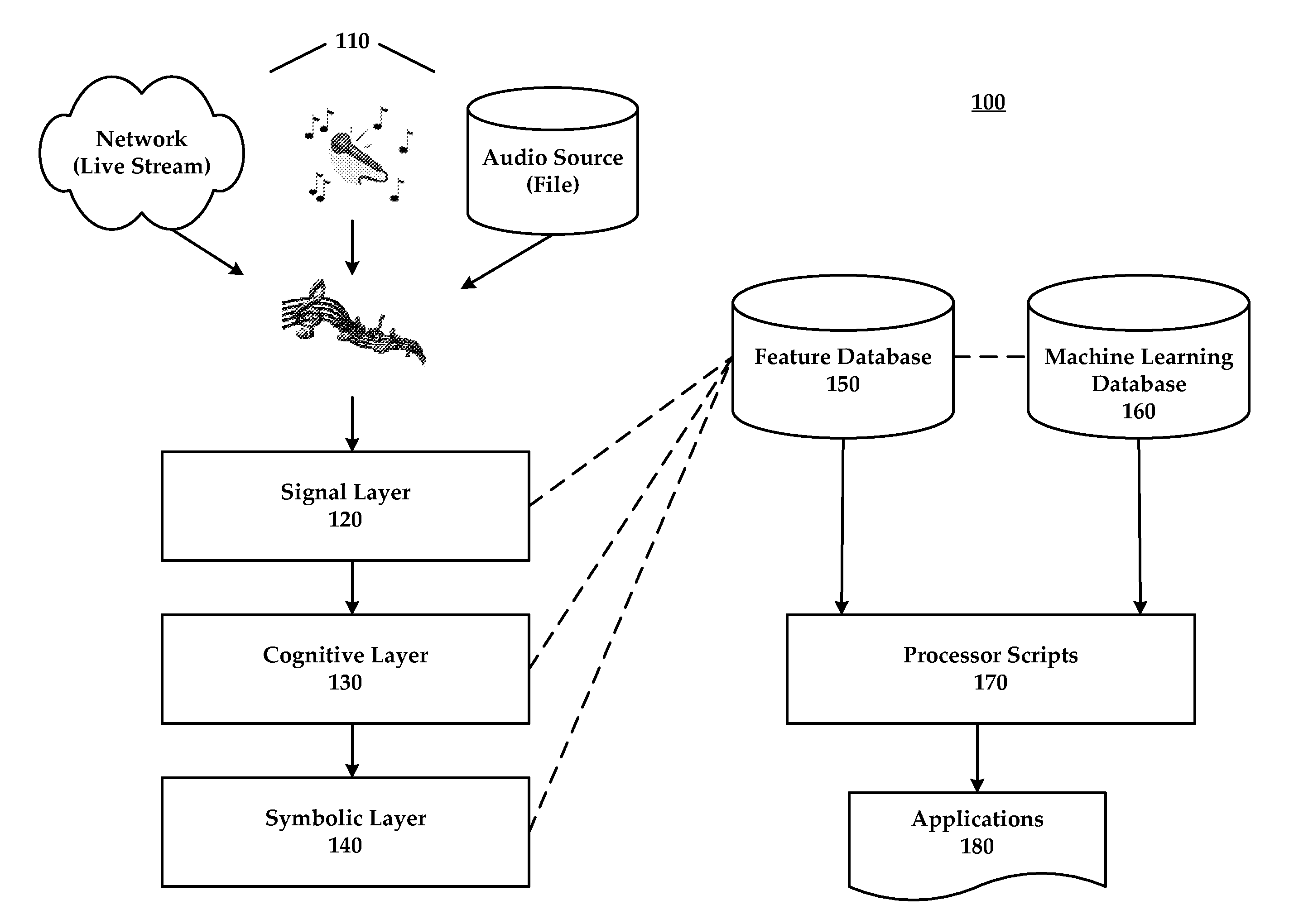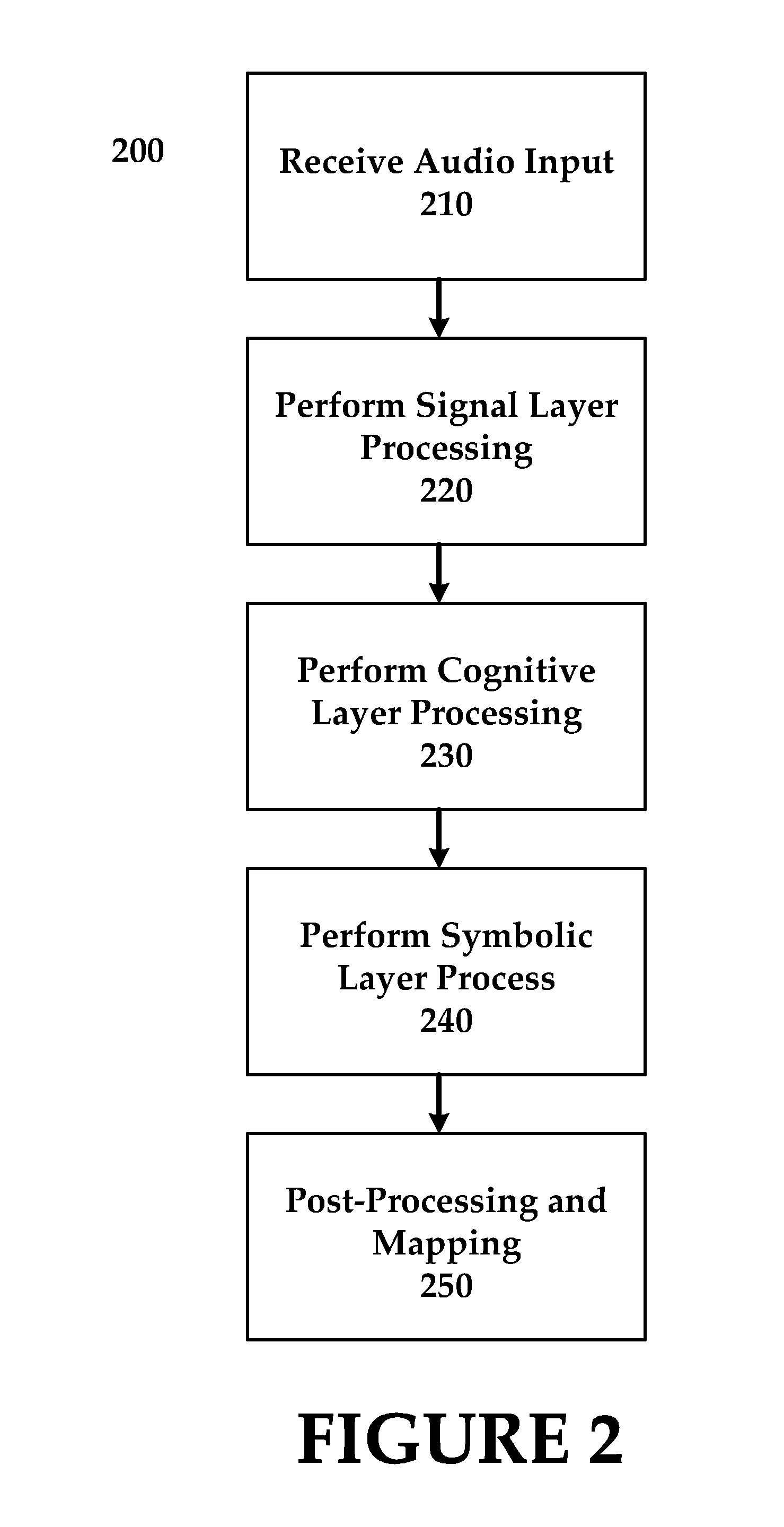Automatic labeling and control of audio algorithms by audio recognition
a technology of automatic labeling and control and audio recognition, applied in the field of real-time audio analysis, can solve the problems of difficulty in adapting an analysis component for new applications, unable to easily integrate with a variety of application run-time environments, and prior art systems are neither run-time configurable or scriptable, so as to improve sound quality, improve work flow, and improve the effect of sound quality
- Summary
- Abstract
- Description
- Claims
- Application Information
AI Technical Summary
Benefits of technology
Problems solved by technology
Method used
Image
Examples
embodiment
Mixing Console Embodiment
[0091]Implementation may likewise occur in the context of hardware mixing consoles and routing systems, live sound systems, installed sound systems, recording and production studios systems, and broadcast facilities as well as software-only or hybrid software / hardware mixing consoles. The presently disclosed invention further elicits a certain degree of robustness against background noise, reverb, and audible mixtures of other sound objects. Additionally, the presently disclosed invention can be used in real-time to continuously listen to the input of a signal processing algorithm and automatically adjust the internal signal processing parameters based on sound detected.
Audio Compression
[0092]The presently disclosed invention can be used to automatically adjust the encoding or decoding settings of bit-rate reduction and audio compression technologies, such as Dolby Digital or DTS compression technologies. Sound object recognition techniques can determine the...
PUM
 Login to View More
Login to View More Abstract
Description
Claims
Application Information
 Login to View More
Login to View More - R&D
- Intellectual Property
- Life Sciences
- Materials
- Tech Scout
- Unparalleled Data Quality
- Higher Quality Content
- 60% Fewer Hallucinations
Browse by: Latest US Patents, China's latest patents, Technical Efficacy Thesaurus, Application Domain, Technology Topic, Popular Technical Reports.
© 2025 PatSnap. All rights reserved.Legal|Privacy policy|Modern Slavery Act Transparency Statement|Sitemap|About US| Contact US: help@patsnap.com



